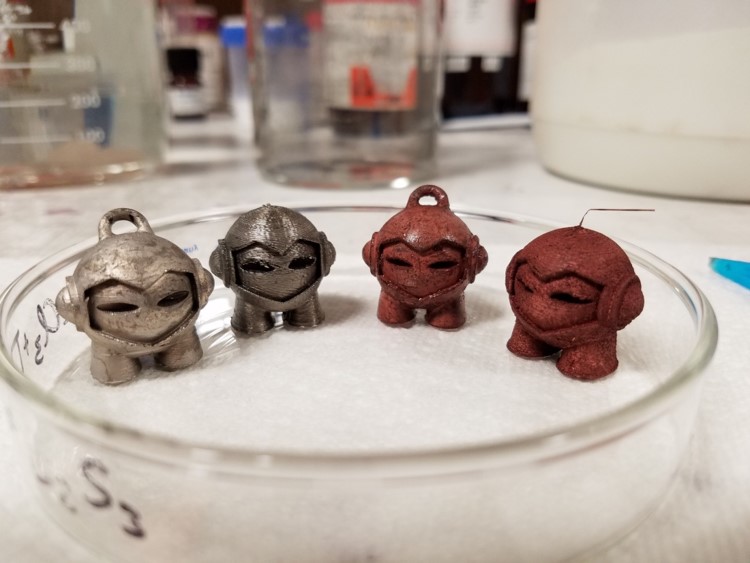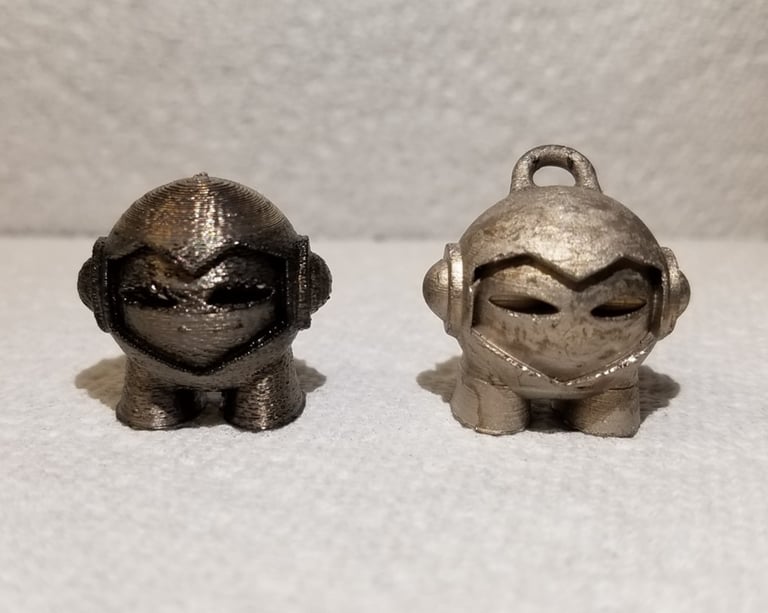EPIC
Additive Manufacturing (AM) has revolutionized how we design and fabricate complex parts, but plastic AM still struggles when it comes to performance. Most printed components fall short in wear resistance, strength, and thermal stability. This effort explored a novel electroless plating method to apply high-performance tribological coatings to AM parts made via FDM and SLA. The process delivers uniform coatings regardless of geometry, enhancing mechanical, thermal, and frictional properties. The goal? Turn lightweight, low-cost prints into rugged, functional components, ready for real-world applications.
Enhancing Performance via Innovative Coatings of AM Parts
Year: 2017
Customer: AF
The Puzzle
What was the challenge? Why was it worth solving?
Additive Manufacturing (AM) is no longer just a prototyping tool, it’s becoming a production-ready platform. With digital precision and layer-by-layer control, AM enables complex designs, rapid iteration, and reduced material waste. Technologies like FDM and SLA are well-established, and advanced printers are ready for the spotlight. But there’s a catch.
Despite the promise, polymer AM parts still fall short where it matters most: performance. Materials often can’t handle the wear, heat, or stress demanded by high-stakes applications—especially in defense and aerospace. The designs are brilliant, but the parts can’t take the pressure.
That’s where the opportunity lies. The Air Force has identified a critical need: apply metallic coatings to plastic AM parts to bridge the performance gap. If done right, electroplated coatings could unlock mechanical strength, wear resistance, and thermal stability—pushing AM into truly functional territory. But the path to reliable, conformal, and scalable coatings across complex geometries remains unsolved.
The Game Plan
How the problem was approached — strategy, tools, and intent.
This project aimed to develop a robust, power-free plating method for applying wear-resistant metal/quasicrystalline (QC) coatings on 3D-printed polymer parts. The goal: achieve a reproducible process capable of coating complex AM geometries without high-cost equipment.
To get there, we planned to:
Develop a pre-treatment protocol tailored to SLA and FDM substrates to enable strong adhesion.
Formulate and optimize a Ni/QC electroless plating bath, focusing on:
Reducing agents
Complexing systems
Stabilizers for bath longevity and quality control
Design a single-step co-deposition process allowing Ni and QC particles to deposit simultaneously without post-processing.
Plate test coupons using selected AM materials to evaluate:
Coating uniformity
Thickness control
Process repeatability and adhesion
Collect performance data to establish process guidelines and identify parameters critical to coating quality and scalability
The proposed work focused on establishing a foundational process that could translate directly to military-grade, high-performance AM components—without relying on capital-intensive systems.
What Actually Happened
The results. The breakthroughs. Maybe even a few surprises.
As a baseline demonstration, we successfully deposited electroless Ni coatings (6–8% P) onto 3D-printed ABS (FDM) and standard resin (SLA) parts using an off-the-shelf plating solution. Despite no pre-cleaning or conditioning, full surface coverage was achieved in both cases, confirming good plating compatibility with printed polymers.
Visual differences were observed:
FDM (ABS) part exhibited a bright finish,
SLA (resin) part showed a matte finish,
indicating substrate-driven variation in Ni grain size (smaller grains = brighter appearance).
These initial results validated the feasibility of coating complex AM surfaces with electroless Ni. Detailed optimization efforts for Ni/QC coatings, including tuning of metal content, particle size, and ductile-phase additions, were outlined for subsequent steps.
Show & Tell
Visuals, prints, textures, data — what it looked like in the real world.




Martian figurines fabricated via FDM and SLA receive their first electroless Ni and Cu coatings. A successful early attempt at metallizing printed geometries.
Same chemistry, different substrates: FDM-printed part emerges shiny, while SLA counterpart remains matte.
Lessons from the Lab
What worked. What didn’t. What was learned along the way.
Surface matters – The same plating chemistry produced dramatically different finishes on FDM and SLA parts, reminding us that substrate composition and texture directly influence coating grain structure.
No prep, still plated – Even without surface cleaning or conditioning, electroless Ni adhered well to both ABS and SLA prints - proof that baseline adhesion is achievable, though optimization is essential.
Finish isn't just aesthetic – The matte vs. shiny distinction isn’t just visual; it points to underlying grain size differences that affect wear resistance and mechanical performance.
Electroless plating is viable – The ease of applying uniform coatings without specialized prep or equipment validated the foundational premise: functionalizing AM parts through chemistry, not capital investment.